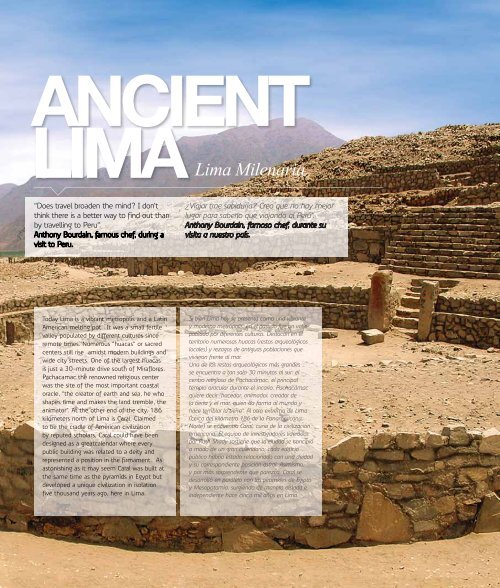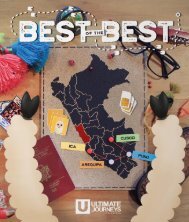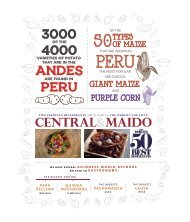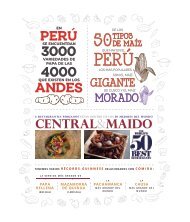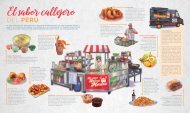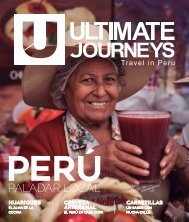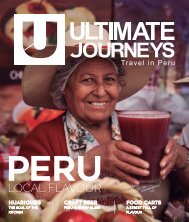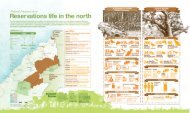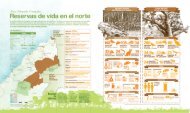You also want an ePaper? Increase the reach of your titles
YUMPU automatically turns print PDFs into web optimized ePapers that Google loves.
AnCIEnt<br />
LIMA Lima Milenaria<br />
“Does travel broaden the mind? I don't<br />
think there is a better way to find out than<br />
by travelling to Peru”.<br />
Anthony Bourdain, famous chef, during a<br />
visit to Peru.<br />
¿Viajar trae sabiduría? Creo que no hay mejor<br />
lugar para saberlo que viajando al Perú”.<br />
Anthony Bourdain, famoso chef, durante su<br />
visita a nuestro país.<br />
Today Lima is a vibrant metropolis and a Latin<br />
American melting pot. It was a small fertile<br />
valley populated by different cultures since<br />
remote times. Numerous “huacas” or sacred<br />
centers still rise amidst modern buildings and<br />
wide city streets. One of the largest huacas<br />
is just a 30-minute drive south of Miraflores.<br />
Pachacamac the renowned religious center<br />
was the site of the most important coastal<br />
oracle, “the creator of earth and sea, he who<br />
shapes time and makes the land tremble, the<br />
animator”. At the other end of the city, 186<br />
kilometers north of Lima is Caral. Claimed<br />
to be the cradle of American civilization<br />
by reputed scholars, Caral could have been<br />
designed as a greatcalendar where every<br />
public building was related to a deity and<br />
represented a position in the firmament. As<br />
astonishing as it may seem Caral was built at<br />
the same time as the pyramids in Egypt but<br />
developed a unique civilization in isolation<br />
five thousand years ago, here in Lima.<br />
Si bien Lima hoy se presenta como una vibrante<br />
y moderna metrópolis, en el pasado fue un valle<br />
poblado por diferentes culturas. Destacan en el<br />
territorio numerosas huacas (restos arqueológicos<br />
locales) y rezagos de antiguas poblaciones que<br />
vivieron frente al mar.<br />
Uno de los restos arqueológicos más grandes<br />
se encuentra a tan solo 30 minutos al sur: el<br />
centro religioso de Pachacámac, el principal<br />
templo oracular durante el incario. Pachacámac<br />
quiere decir “hacedor, animador, creador de<br />
la tierra y el mar, quien da forma al mundo y<br />
hace temblar la tierra”. Al otro extremo de Lima<br />
(cerca del kilómetro 186 de la Panamericana<br />
Norte) se encuentra Caral; cuna de la civilización<br />
americana. El equipo de investigadores liderados<br />
por Ruth Shady sostiene que la ciudad se concibió<br />
a modo de un gran calendario; cada edificio<br />
público habría estado relacionado con una deidad<br />
y su correspondiente posición astral. Asimismo,<br />
y por más sorprendente que parezca, Caral se<br />
desarrolló en paralelo con las pirámides de Egipto<br />
y Mesopotamia, surgiendo de manera aislada e<br />
independiente hace cinco mil años en Lima.<br />
62


